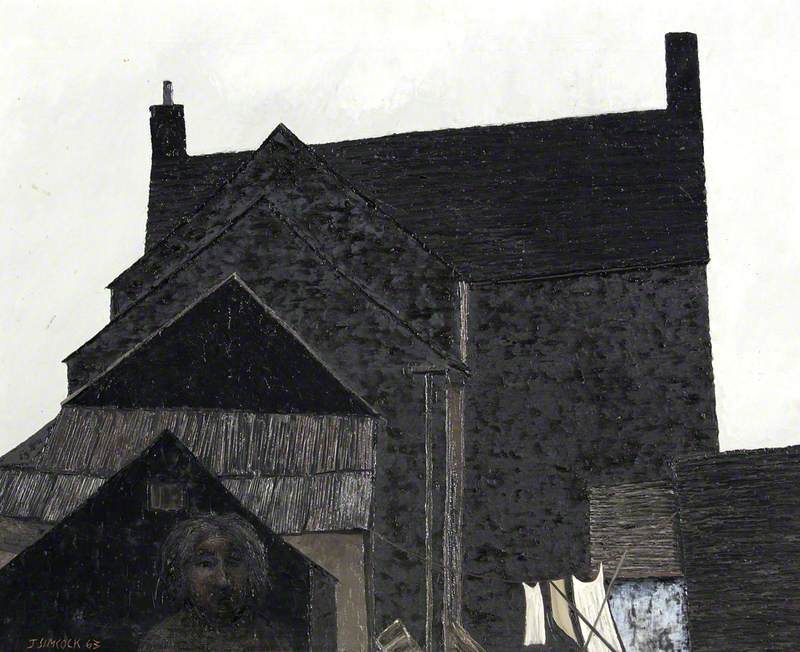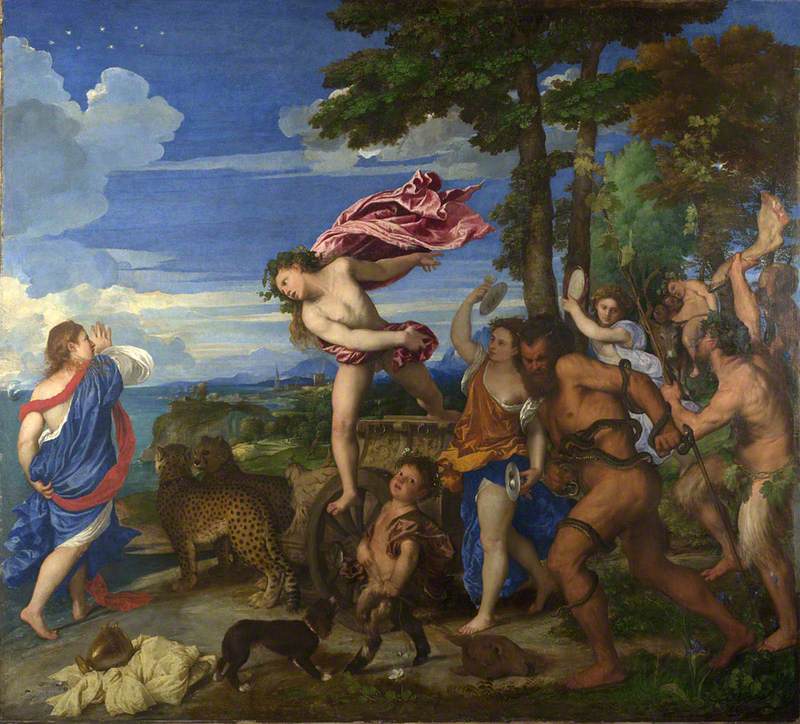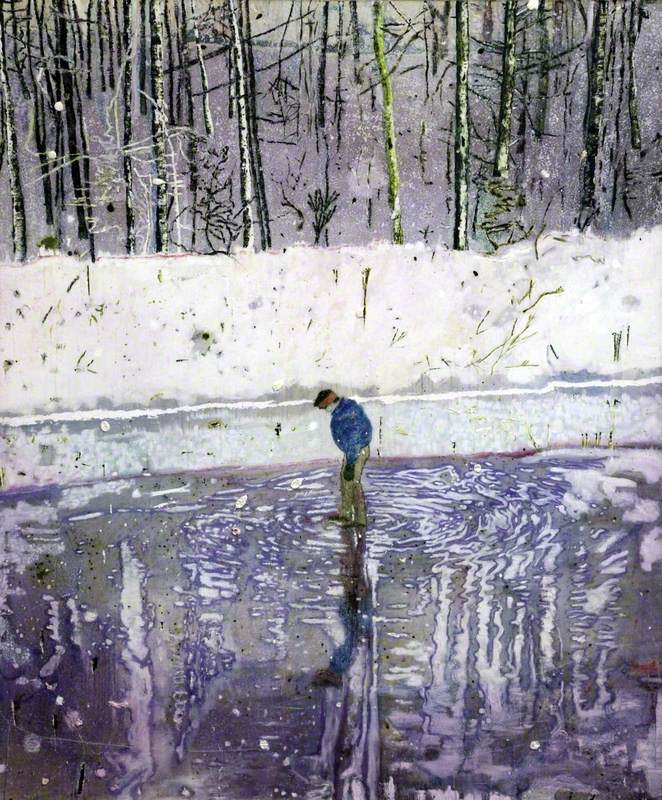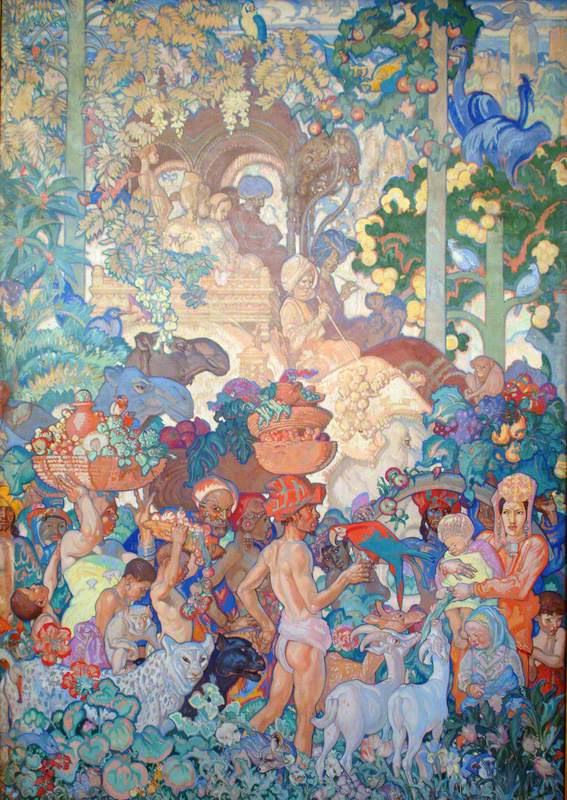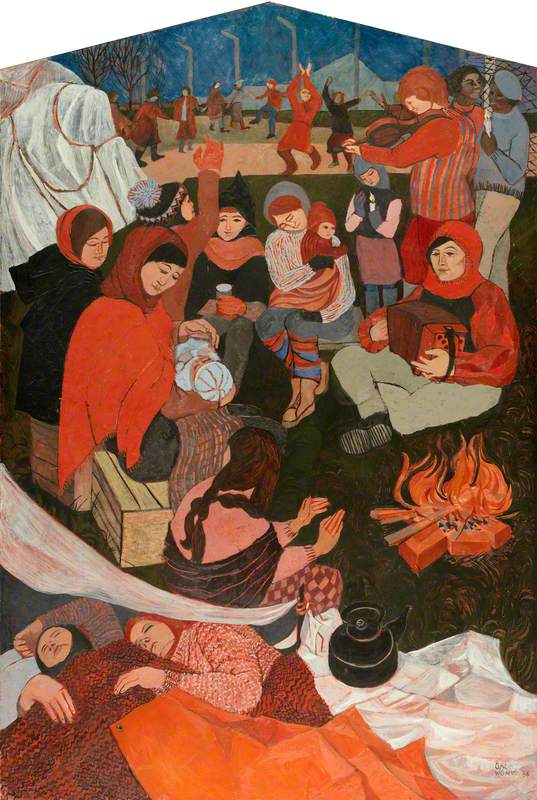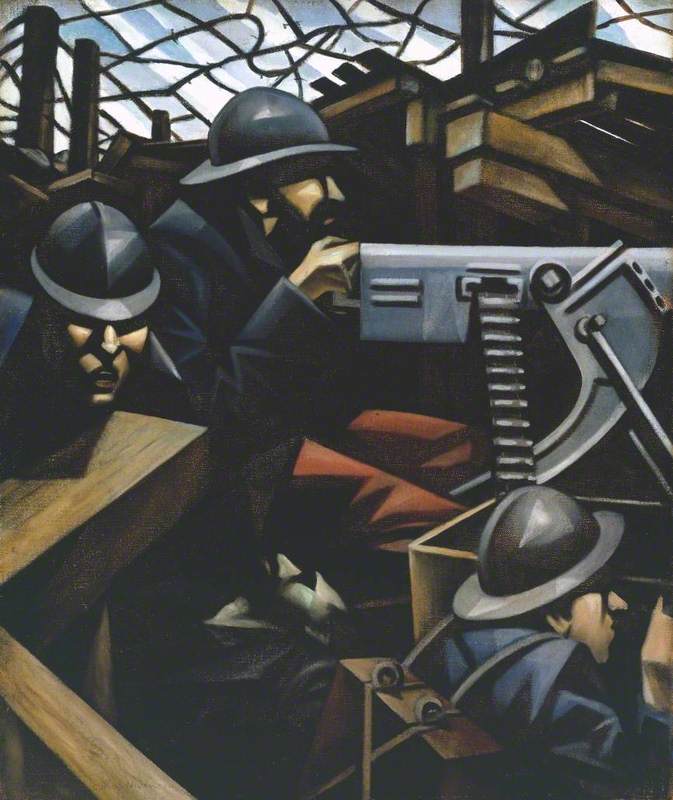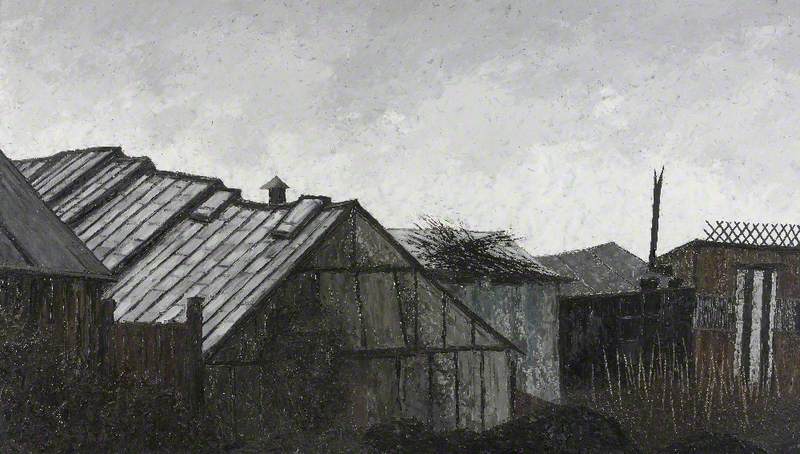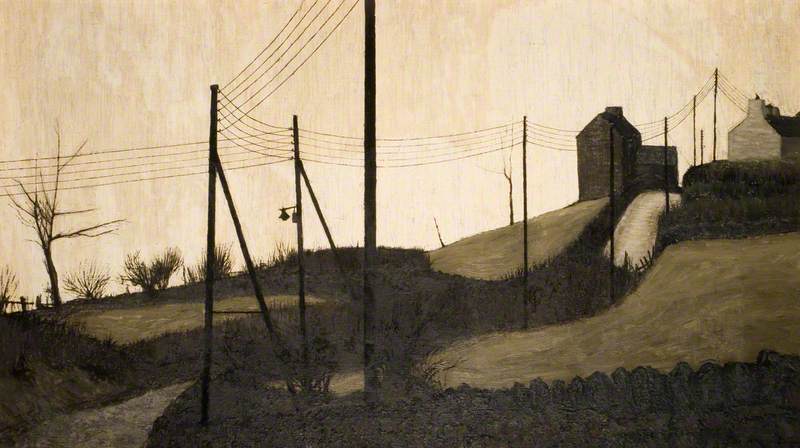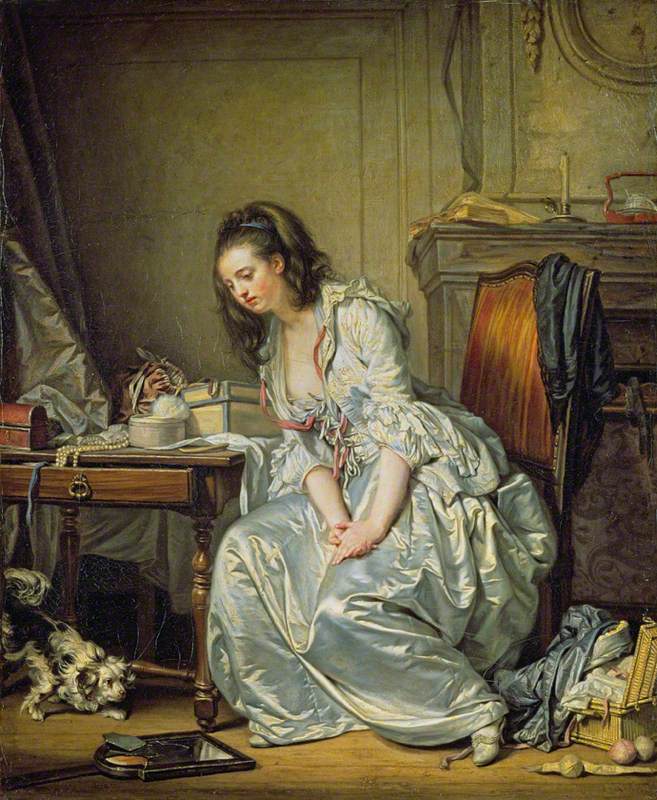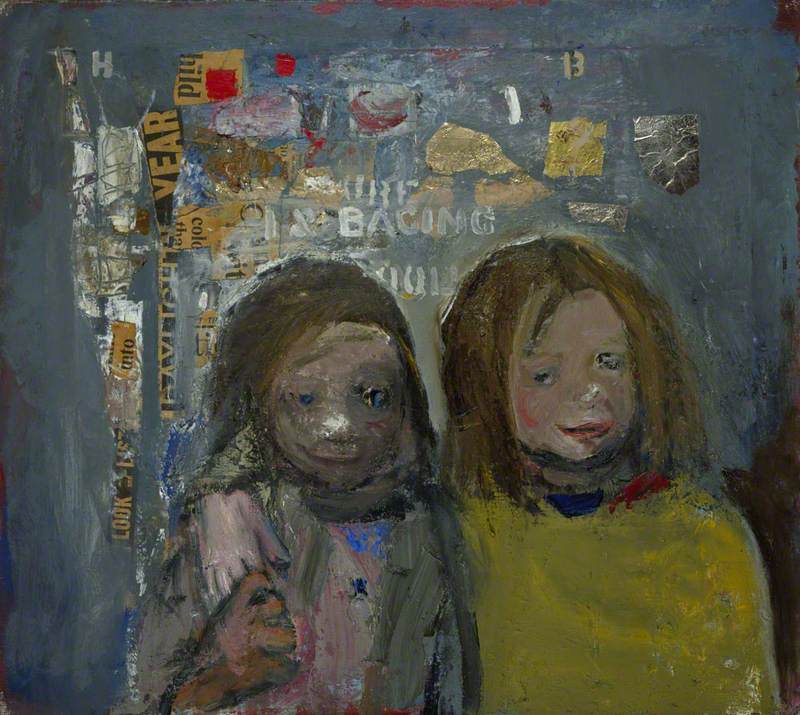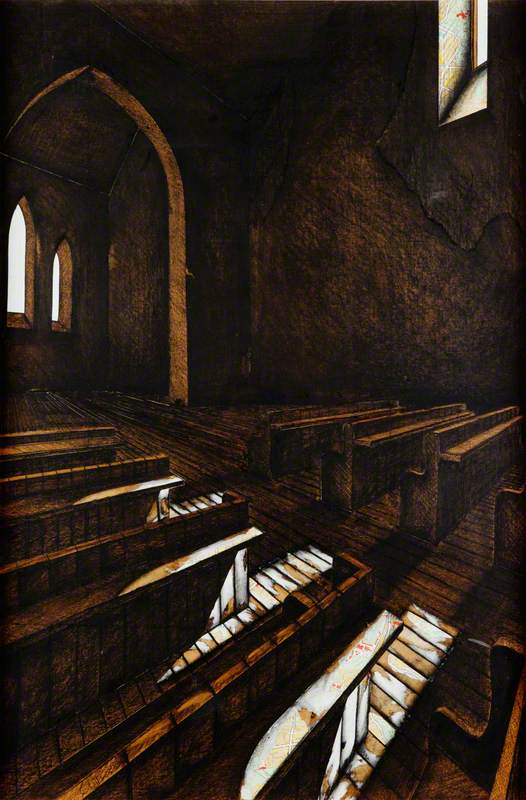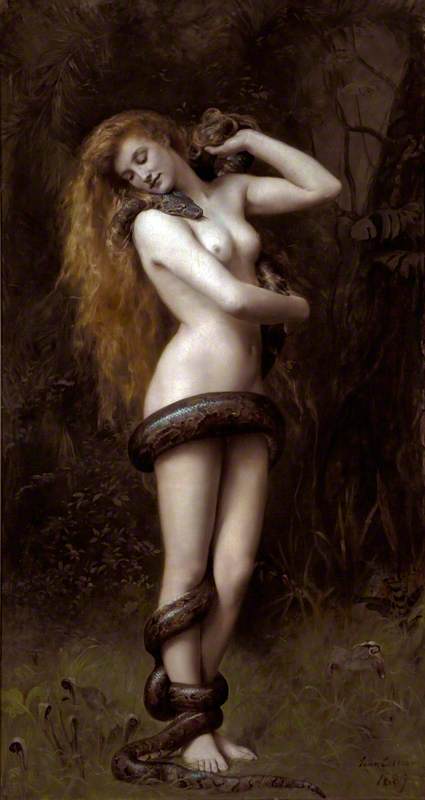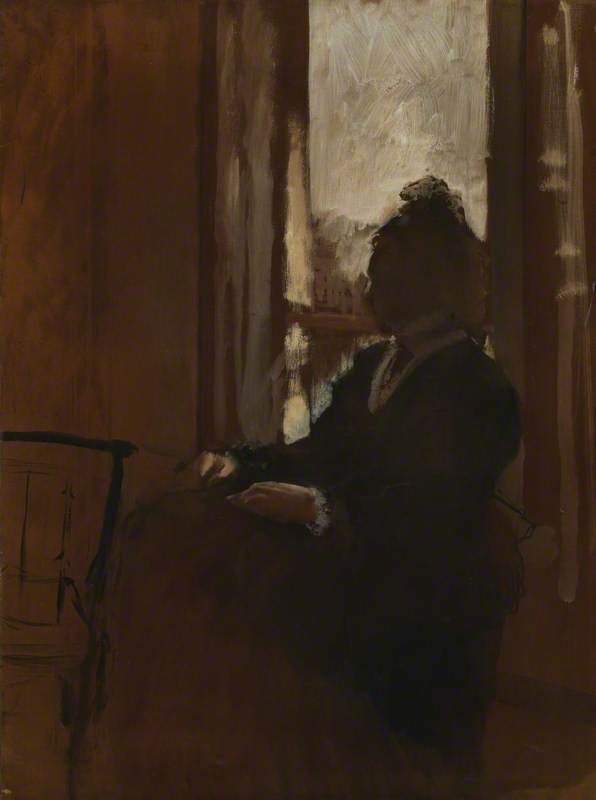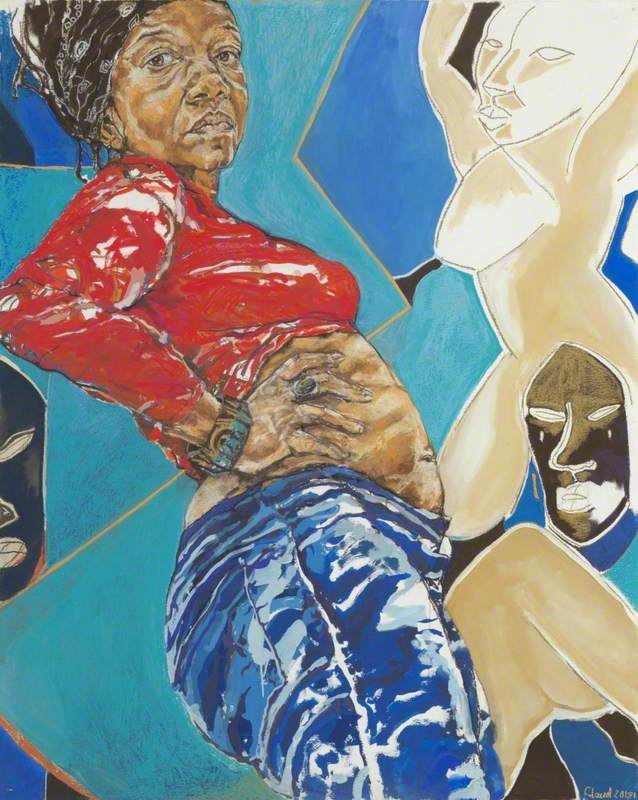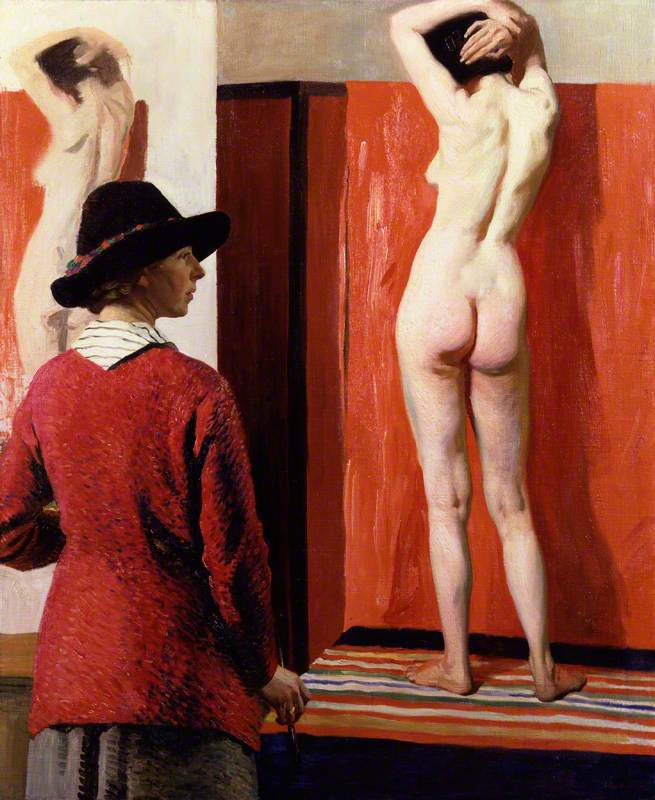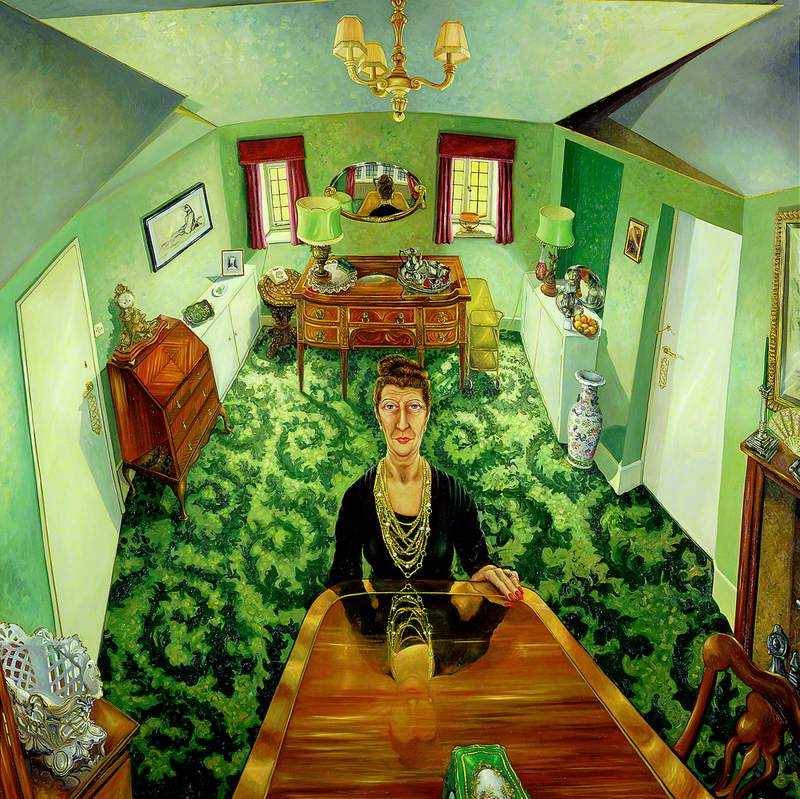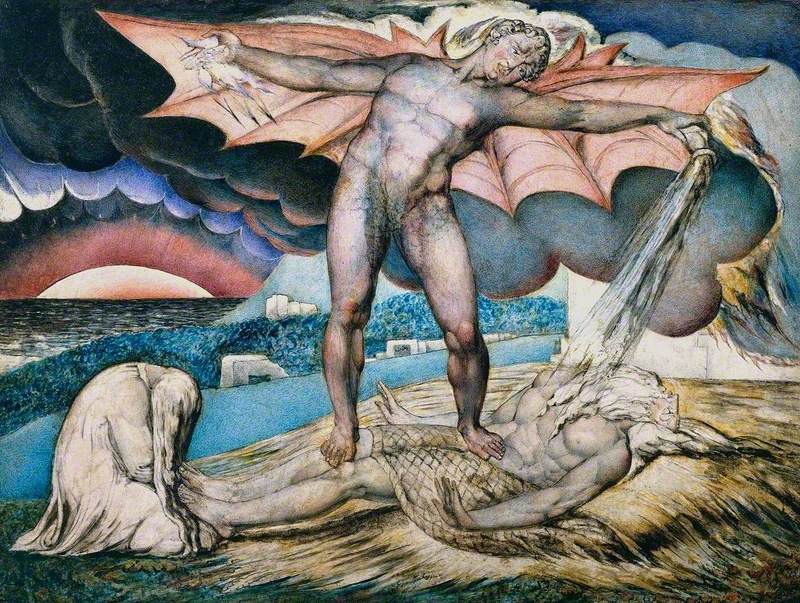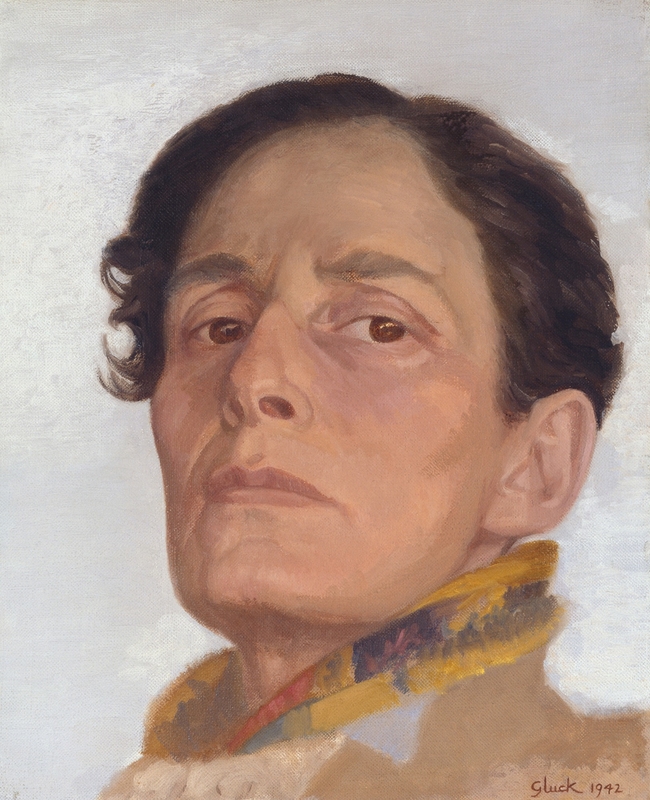According to statistics, the majority of us are 'non-diligent visitors' when it comes to viewing art in a gallery. We're guilty of looking, but not seeing. The problem with this? We may miss the magic within works such as Jack Simcock's Cottage and Figure I.
Unapologetically bleak, the artist paints his Mow Cop residence against a stark, uninviting sky. The looming, angular building dominates the centre of the composition, blocking any sign of nature or humanity from escaping from behind it. This overbearing foreground creates an impression of abstract stagnancy, not altered by hours, seasons, or years gone by. The monochromatic nature of the building – seemingly devoid of any break in the oppressive nature of rich blocks of black – is suffocating.
Surely there is no life here.
This gloomy style is typical of Simcock's earlier works and is often credited as a gritty representation of reality in the Midlands and northern England in the 1960s. Mining and quarrying towns such as Mow Cop littered the country, and Simcock described growing up in 'a tired, tasteless world'. Although the tone of his works may have resonated with common reality, the artist insisted his work made no social comment. 'This is the world in which I live,' he once said. 'I simply accept it.'
If we look closer, this notion of acceptance begins to flood out of the board. In the way perhaps only a homeowner could, Simcock injects a sense of familiarity and comfort into his work through the use of line, as well as through a subtle escape from an almost exclusively monochromatic palette. A delicate focus on the roof of the outhouse brings it to life, with line creating a depth to the crinkled surface of what may be thatch or slate. Bricks are emphasised through the mingling of blacks and greys, offering relief to what initially appears as unforgiving block colour. A lighter wall cries for a lick of paint in the lower corner of the image, with signs of age and wear creeping into the tabula rasa of the scene.
Alongside this, washing sways gently in the breeze. Terracotta sheets seem rich with warmth against the blackness of the wall behind. The symbolic nature of sheets can be seen to represent domesticity and even intimacy, thereby injecting a sense of comfort and care into the scene. The use of colour suggests humanity, alluding to the rich rainbow of life found within the walls of the building.
Then, quite literally, the devil is in the detail. Unseen at first, unignorable once noticed, a haunting human-like figure is visible against the building in the lower-left corner of the painting. The person is bathed in shadow, creating an imprint of curly hair, a pronounced nose, and a vaguely despondent expression. These controversial figures were a common feature within Simcock's paintings, and he once described them as 'psychologically right... as much a part of the landscape as a house or telephone pole.'
Recruited for National Service in 1947 and the sufferer of a 'near breakdown' as a young man, for Simcock these figures may be ghostly manifestations of trauma, or of memories never truly healed. Yet here the person seems to blend seamlessly and peacefully into the image, as if at one with the scene. It seems Simcock was able to capture not only the physical spirit of Mow Cop, but the spirit of those who lived, and will live, within it too.
This is not a house, but a home. Its bleakness is not erased, yet its warmth is not forgotten. There is plenty of life here – we just need to pay attention.
Imogen Hodgkins, second place winner of Write on Art 2020, Y12/13
Further reading
David Buckman, Jack Simcock obituary, The Guardian, 31st May 2012
Biography of Jack Simcock (1929–2012), Trent Art
Arthur Hopcraft, review of 'Art on Primitive Street', The Guardian, 1961
Beverly Serrell, 'Paying Attention: The Duration and Allocation of Visitors' Time in Museum Exhibitions', Curator: The Museum Journal, 40 (2) pp. 108–125, 1997
